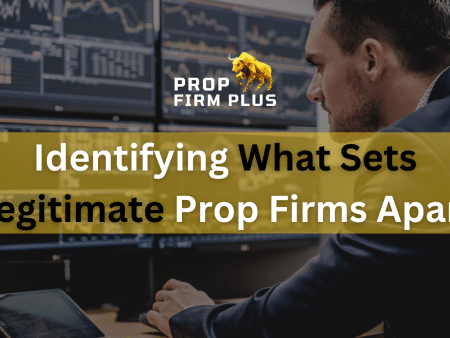
You are mistaken if you believe that trading is just about making money. It’s mainly about risk management. Although it may seem paradoxical, risk management should come first since without an account, you are unable to make any money.
As we all know, there are a ton of materials available for risk management, but very few of them specifically address the difficulties prop traders confront. Specifically, we’re talking about the intra and end-of-day Drawdown limits that are available on almost every Prop Trading Challenge and Funded Account.
Comprehending Trading Risk Management
Because of its volatility and liquidity, futures trading has several earning opportunities, but it also entails hazards. Trading professionals need to employ effective risk management techniques in order to safeguard their cash and increase profitability. Here are some tips to expertly manage trading risk.
Risk Tolerance Boundaries
Effective risk management begins with knowing your level of risk tolerance. Your willingness to bear a certain level of loss is referred to as your risk tolerance. It’s critical to evaluate your trading background, financial objectives, and comfortable risk allowance. It’s not necessary for your risk tolerance to match the amount of your account. While trader A could have a $5,000 account and be prepared to lose everything, trader B might have a $10,000 account and only be willing to risk $3,000.
In order to determine your risk tolerance, consider all aspects carefully, and never take on more risk than you can comfortably lose as it’s different for everyone (i.e., don’t gamble).
Using Take Profit and Stop Loss Orders
A stop loss order is a technique used by traders to limit their losses; it closes a deal automatically when the market price hits a set threshold. Similar to this, take profit orders let traders lock in profits as soon as the market price reaches a certain threshold.
Though stop loss and take profit orders are a good safety measure, they might not execute in the event of a sharp price surge. You should constantly monitor your transactions for these and many more reasons.
Making Use of Position Sizing
Determining how much of your cash to put into a single transaction is the process of position size. Diversifying your transactions and avoiding overexposing your money to a single position are crucial. In general, you shouldn’t risk more than 2% of your account balance.
Applying a Ratio of Risk to Reward
A positive risk-to-reward ratio guarantees that the possible gains outweigh the dangers incurred. Seeking a ratio where the possible reward is at least three times the potential loss is a popular guideline.
Emotion Control
Risk management is often discussed in terms of statistics, but psychological considerations are as significant. Emotion-driven trading might result in rash choices and higher risks. It’s critical to stick to a well-considered trading strategy and stay away from emotional trading. To put it practically, you shouldn’t take a 4% risk on your subsequent transaction to make up for a 2% loss on a deal. This kind of thinking gets you down a steep slope, or into a really big financial hole.
Ongoing Education and Analysis
Staying informed about recent market trends, economic developments, and other noteworthy elements is imperative for proficient risk management. Your risk management techniques can be greatly improved by ongoing research and analysis.
Regular Performance Assessment
Frequent performance reviews assist in determining how well your risk management and trading strategies are working. It permits essential alterations and enhancements. Keeping a trade notebook is a highly useful tool to aid with this.
Adding Variability to Your Trading Portfolio
Diversifying your portfolio over many derivatives and financial products might help reduce the risks involved in trading futures.
Dynamic Risk Management in the Prop Trading Market
Although dynamic risk management is not a novel idea, not many people discuss it. To put it briefly, it involves reducing the size of your position each time you make a poor trade and increasing it again when you are winning.
You may begin, for instance, with a 2% position size. You will be risking 1% of your next transaction if you lose. Lose once more? 5% of your next trade is at risk. You may even lower it to 0.25%, however, the profit margin may be insufficient given the size of your account. Simply put, dynamic risk management can let you survive the prop game over an extended period of time. The secret to trading, like with anything else, is patience.
The Bottom Line
It may be argued that risk management in prop trading is more important than in any other kind of trading. Although it requires more patience, dynamic risk management will enable you to trade for longer periods of time, improve your chances of passing the Prop Firm Challenge, and raise the amount of money you get from your Funded Account. Just keep these basic guidelines in mind:
- If you are winning, stick to your starting 2% risk level.
- If a deal goes against you, reduce it to 1%.
- If you lose a trade at 1%, dial it down to 0.5% and stay there as long as you are losing.
- After you’ve made a profit on 50% to 100% of your previous 1% losing deal, turn it back up to 1%.
- Once you have made a profit of 50% to 100% on your previous 2% losing transaction, turn it back up to 2%.










